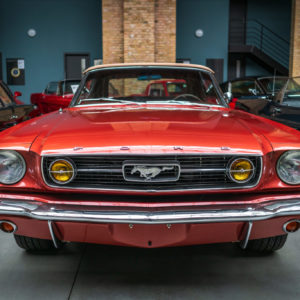 Classic cars –– just like modern vehicles –– come in all different shapes and sizes. Then, as now, manufacturers created different cars for different target markets. Of course, one of the most popular and enduring types of car from the late 1960s and early 1970s is the uniquely American muscle car. Yet, the term muscle car has always been somewhat vague. Some even use “muscle car” interchangeably with “sports car.” To be fair, it can be somewhat difficult to differentiate a muscle car from a regular sports car. And the muscle car vs pony car debate is even more muddled. Here, we aim to clear up the confusion and explain the origins and differences between classic pony cars and muscle cars:
Classic cars –– just like modern vehicles –– come in all different shapes and sizes. Then, as now, manufacturers created different cars for different target markets. Of course, one of the most popular and enduring types of car from the late 1960s and early 1970s is the uniquely American muscle car. Yet, the term muscle car has always been somewhat vague. Some even use “muscle car” interchangeably with “sports car.” To be fair, it can be somewhat difficult to differentiate a muscle car from a regular sports car. And the muscle car vs pony car debate is even more muddled. Here, we aim to clear up the confusion and explain the origins and differences between classic pony cars and muscle cars:
Muscle Car vs Pony Car: What’s the Difference?
 Classic cars –– just like modern vehicles –– come in all different shapes and sizes. Then, as now, manufacturers created different cars for different target markets. Of course, one of the most popular and enduring types of car from the late 1960s and early 1970s is the uniquely American muscle car. Yet, the term muscle car has always been somewhat vague. Some even use “muscle car” interchangeably with “sports car.” To be fair, it can be somewhat difficult to differentiate a muscle car from a regular sports car. And the muscle car vs pony car debate is even more muddled. Here, we aim to clear up the confusion and explain the origins and differences between classic pony cars and muscle cars:
Classic cars –– just like modern vehicles –– come in all different shapes and sizes. Then, as now, manufacturers created different cars for different target markets. Of course, one of the most popular and enduring types of car from the late 1960s and early 1970s is the uniquely American muscle car. Yet, the term muscle car has always been somewhat vague. Some even use “muscle car” interchangeably with “sports car.” To be fair, it can be somewhat difficult to differentiate a muscle car from a regular sports car. And the muscle car vs pony car debate is even more muddled. Here, we aim to clear up the confusion and explain the origins and differences between classic pony cars and muscle cars:

; [/php]/images/credit-cards.png)
; [/php]/images/autoshop-logo.png)